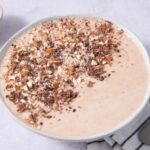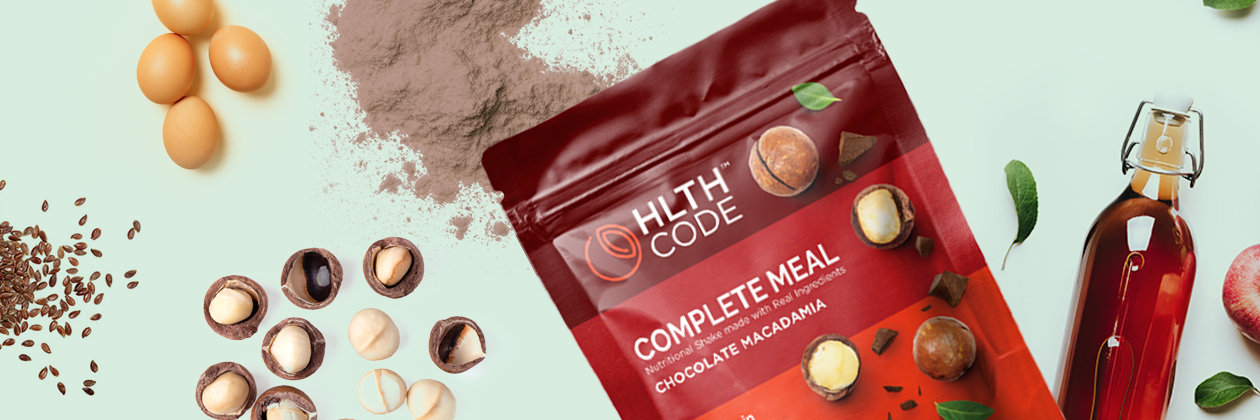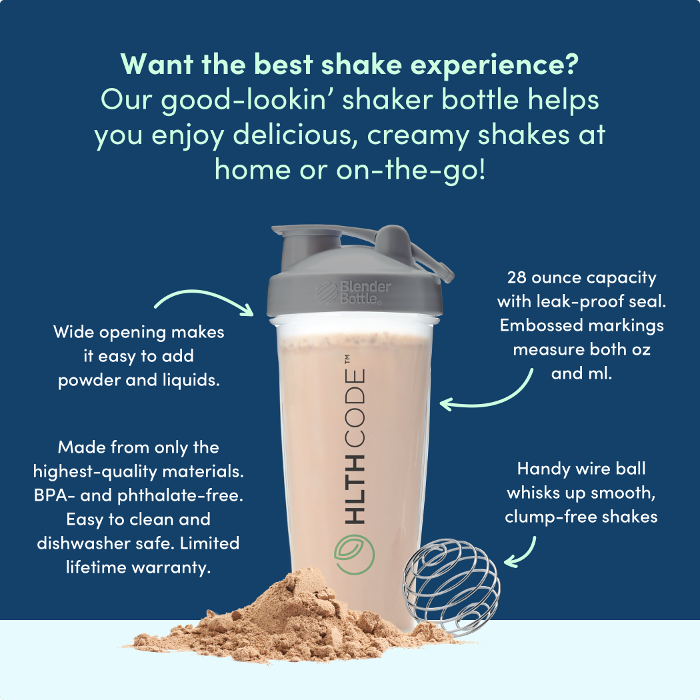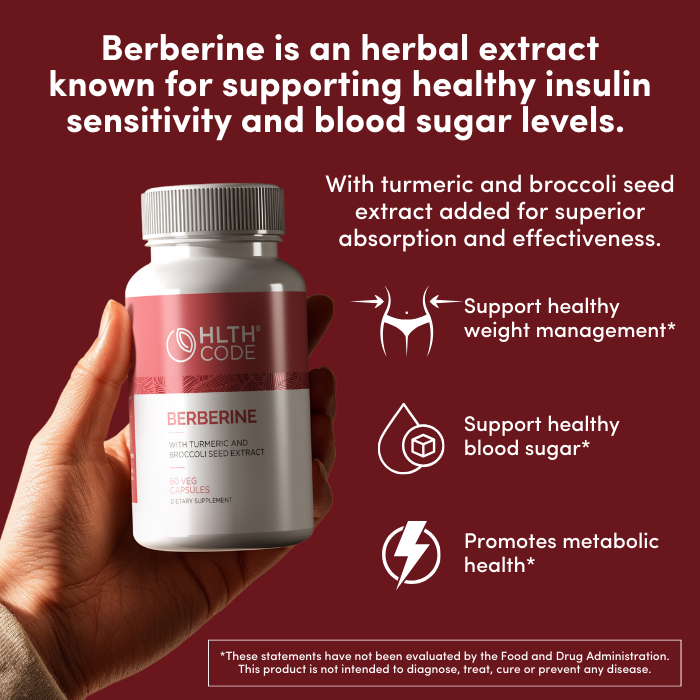Apple Cider Vinegar – the new (old) superfood
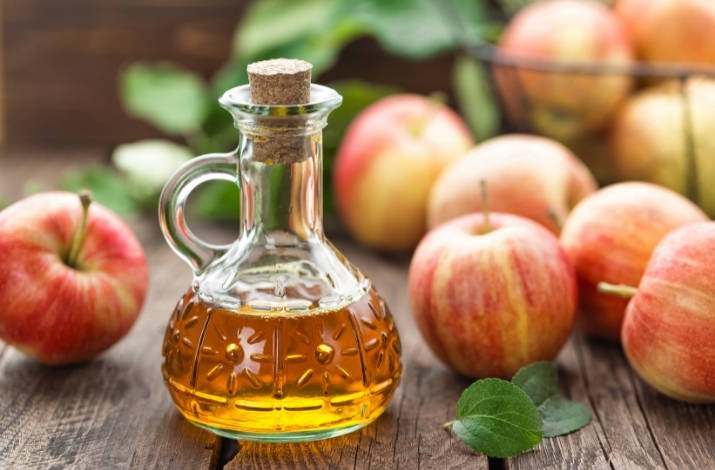
The benefits of apple cider vinegar
For something so old, vinegar has stayed pretty cool. People have been making vinegar as long as they’ve been making wine, which is thousands of years. Not only does vinegar have a long history, like wine, but it also has a long process in making it. The wine-vinegar connection is often unappreciated, but it’s relevant in understanding some of the metabolic magic that happens with vinegar.
It may seem strange, but let’s start the conversation with wine. While many of us don’t drink alcohol, wine has a good reputation for helping human health—there are reports that it can lower the risk of heart disease and diabetes [1, 2]. Wine is made from fermenting a fruit. Once the fruit is properly crushed, it is mixed with bacteria to allow for the chemical process that actually turns juice to wine. The bacteria ferment, metabolizing sugars and fibers into metabolic waste products, including ethanol (i.e., alcohol) and short-chain fatty acids. Thus, wine is not as sweet as the fruit juice, and is tart—the sign of a fermented food. This is an important and often overlooked aspect of wine.
Many have long proclaimed that the benefits of wine are found in fruits’ richly pigmented polyphenols that come from the skin of certain fruits. These antioxidant chemicals can indeed be healthy, as has been shown in lab animals, but this has led to premature conclusions that they may improve human health, too [3]. Unfortunately, the amount of polyphenols found in wines is so low that a person could not conceivably benefit from them [4].
In reality, our love affair with polyphenols has caused us to overlook what is probably the real hero: bacteria and short-chain fats. Wine contains several beneficial bacteria that are used to ferment the fruit juice [5]. Moreover, the polyphenols’ benefit is probably also linked to bacteria, rather than any antioxidant potential—polyphenols may act as a prebiotic, which, rather than populating the gut with good bacteria, helps feed the existing good bacteria [6].
Now, let’s move onto vinegar; after all, that’s what happens when wine goes too far. Essentially, vinegar is wine that has fermented even further with the help of additional bacteria. Once again, this means even less sugar (as it’s further metabolized) and even more short-chain fats, which really increases the tartness. Also, by this point, the bacteria have even consumed the alcohol, leaving essentially none behind.
Any type of vinegar will have the short-chain fats that are so beneficial—again, this is what gives vinegar such a tart flavor. One benefit of these fats is that they stimulate the production of mitochondria, and even boost metabolic rate within fat cells [7]. Additionally, the primary short-chain fat in vinegar is acetic acid and it is a powerhouse—not only stimulating the production of new mitochondria, but also improving glucose regulation and insulin sensitivity [8].
Raw apple cider vinegar is the most commonly consumed vinegar and it’s not hard to see why. Consuming apple cider vinegar with a starchy meal helps lower the glucose and insulin effect of that meal in insulin-resistant people [9, 10], and may help generally improve glucose control in type 2 diabetics [11]. Additionally, taking a “shot” of raw apple cider vinegar in the evening helps control glucose levels the following morning, when glucose levels tend to climb [12]. In addition to the short-chain fats, raw vinegar still carries the bacteria that created the vinegar, acting as a sort of probiotic.
Take-away Thoughts
I am an advocate of fermented foods and drinks and I consider it one of the casualties of the modern diet. Due partly to our processed and refrigerated foods, the average person gets almost no short-chain fats in their diet. When bacteria are busily fermenting starches and sugars (that’s what bacteria eat, after all), they produce these small fats as a by-product. That’s a pretty good deal for us—we gain a much greater metabolic benefit from the short-chain fats than we do the starches. Vinegar is an easy way to capture some of the metabolic boost from fermentation. I recommend either taking a shot of apple cider vinegar in a full glass of water twice a day, or taking 250mg – 500mg of dehydrated apple cider vinegar powder (which can be found in my favorite meal shake).
References
1 Booyse, F. M., Pan, W., Grenett, H. E., Parks, D. A., Darley-Usmar, V. M., Bradley, K. M. and Tabengwa, E. M. (2007) Mechanism by which alcohol and wine polyphenols affect coronary heart disease risk. Annals of epidemiology. 17, S24-31
2 Drel, V. R. and Sybirna, N. (2010) Protective effects of polyphenolics in red wine on diabetes associated oxidative/nitrative stress in streptozotocin-diabetic rats. Cell Biol Int. 34, 1147-1153
3 Kopp, P. (1998) Resveratrol, a phytoestrogen found in red wine. A possible explanation for the conundrum of the ‘French paradox’? European journal of endocrinology / European Federation of Endocrine Societies. 138, 619-620
4 Semba, R. D., Ferrucci, L., Bartali, B., Urpi-Sarda, M., Zamora-Ros, R., Sun, K., Cherubini, A., Bandinelli, S. and Andres-Lacueva, C. (2014) Resveratrol levels and all-cause mortality in older community-dwelling adults. JAMA Intern Med. 174, 1077-1084
5 Garcia-Ruiz, A., Gonzalez de Llano, D., Esteban-Fernandez, A., Requena, T., Bartolome, B. and Moreno-Arribas, M. V. (2014) Assessment of probiotic properties in lactic acid bacteria isolated from wine. Food Microbiol. 44, 220-225
6 Queipo-Ortuno, M. I., Boto-Ordonez, M., Murri, M., Gomez-Zumaquero, J. M., Clemente-Postigo, M., Estruch, R., Cardona Diaz, F., Andres-Lacueva, C. and Tinahones, F. J. (2012) Influence of red wine polyphenols and ethanol on the gut microbiota ecology and biochemical biomarkers. The American journal of clinical nutrition. 95, 1323-1334
7 Hu, J., Kyrou, I., Tan, B. K., Dimitriadis, G. K., Ramanjaneya, M., Tripathi, G., Patel, V., James, S., Kawan, M., Chen, J. and Randeva, H. S. (2016) Short-Chain Fatty Acid Acetate Stimulates Adipogenesis and Mitochondrial Biogenesis via GPR43 in Brown Adipocytes. Endocrinology. 157, 1881-1894
8 Santos, H. O., de Moraes, W., da Silva, G. A. R., Prestes, J. and Schoenfeld, B. J. (2019) Vinegar (acetic acid) intake on glucose metabolism: A narrative review. Clin Nutr ESPEN. 32, 1-7
9 Johnston, C. S., Kim, C. M. and Buller, A. J. (2004) Vinegar improves insulin sensitivity to a high-carbohydrate meal in subjects with insulin resistance or type 2 diabetes. Diabetes care. 27, 281-282
10 Liatis, S., Grammatikou, S., Poulia, K. A., Perrea, D., Makrilakis, K., Diakoumopoulou, E. and Katsilambros, N. (2010) Vinegar reduces postprandial hyperglycaemia in patients with type II diabetes when added to a high, but not to a low, glycaemic index meal. European journal of clinical nutrition. 64, 727-732
11 Johnston, C. S., White, A. M. and Kent, S. M. (2009) Preliminary evidence that regular vinegar ingestion favorably influences hemoglobin A1c values in individuals with type 2 diabetes mellitus. Diabetes research and clinical practice. 84, e15-17
12 White, A. M. and Johnston, C. S. (2007) Vinegar ingestion at bedtime moderates waking glucose concentrations in adults with well-controlled type 2 diabetes. Diabetes care. 30, 2814-2815
This article is for informational and educational purposes only. It is not, nor is it intended to be substitute for professional medical advice, diagnosis, or treatment and should never be relied upon for specific medical advice.









